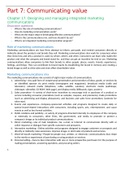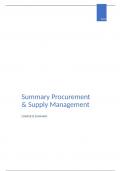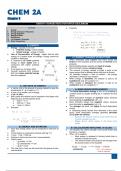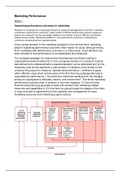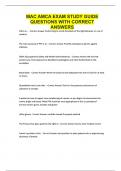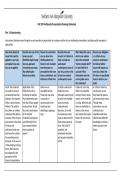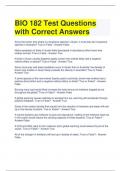Part 7: Communicating value
Chapter 17: Designing and managing integrated marketing
communications
Discussion questions
- What is the role of marketing communications?
- How do marketing communications work?
- What are the major steps in developing effective communications?
- What is the communications mix, and how should it be set?
- What is an integrated marketing communication program?
Role of marketing communications
Marketing communications are how firms attempt to inform, persuade, and remind consumers directly or
indirectly about the products and brands they sell. Marketing communications also work for consumers when
they show how and why a product is used, by whom, where, and when. Consumers can learn who makes the
product and what the company and brand stand for, and they can get an incentive for trial or use. Marketing
communications allow companies to link their brands to other people, places, events, brands, experiences,
feelings, and things. They can contribute to brand equity by establishing the brand in memory and creating a
brand image as well as drive sales and even affect shareholder value
Marketing communications mix
The marketing communications mix consists of eight major modes of communication:
1. Advertising—Any paid form of nonpersonal presentation and promotion of ideas, goods, or services by
an identified sponsor via print media (newspapers and magazines), broadcast media (radio and
television), network media (telephone, cable, satellite, wireless), electronic media (audiotape,
videotape, videodisk, CD-ROM, Web page), and display media (billboards, signs, posters).
2. Sales promotion—A variety of short-term incentives to encourage trial or purchase of a product or
service including consumer promotions (such as samples, coupons, and premiums), trade promotions
(such as advertising and display allowances), and business and sales force promotions (contests for
sales reps).
3. Events and experiences—Company-sponsored activities and programs designed to create daily or
special brand-related interactions with consumers, including sports, arts, entertainment, and cause
events as well as less formal activities.
4. Public relations and publicity—A variety of programs directed internally to employees of the company
or externally to consumers, other firms, the government, and media to promote or protect a
company’s image or its individual product communications.
5. Direct marketing—Use of mail, telephone, fax, e-mail, or Internet to communicate directly with or
solicit response or dialogue from specific customers and prospects.
6. Interactive marketing—Online activities and programs designed to engage customers or prospects and
directly or indirectly raise awareness, improve image, or elicit sales of products and services.
7. Word-of-mouth marketing—People-to-people oral, written, or electronic communications that relate
to the merits or experiences of purchasing or using products or services.
8. Personal selling—Face-to-face interaction with one or more prospective purchasers for the purpose of
making presentations, answering questions, and procuring orders.
1
,Communication platforms
Marketing communication effects
The way brand associations are formed does not matter. In other words, whether a consumer has an equally
strong, favorable, and unique brand association of Subaru with the concepts “outdoors,” “active,” and
“rugged” because of exposure to a TV ad that shows the car driving over rugged terrain at different times of
the year, or because Subaru sponsors ski, kayak, and mountain bike events, the impact in terms of Subaru’s
brand equity should be identical.
But these marketing communications activities must be integrated to deliver a consistent message and
achieve the strategic positioning. The starting point in planning marketing communications is a communication
audit that profiles all interactions customers in the target market may have with the company and all its
products and services. To implement the right communications programs and allocate dollars efficiently,
marketers need to assess which experiences and impressions will have the most influence at each stage of the
buying process.
The Communications Process Models
Marketers should understand the fundamental elements of effective communications. Two models are useful:
a macromodel and a micromodel.
Macromodel of the communications process
Figure 17.1 shows a macromodel with nine key factors in effective communication. Two represent the major
parties. sender and receiver. Two represent the major tools message and media. Four represent major
communication functions encoding, decoding, response, and feedback. The last element in the system is
noise, random and competing messages that may interfere with the intended communication. Senders must
know what audiences they want to reach and what responses they want to get. They must encode their
messages so the target audience can decode them. They
must transmit the message through media that reach the
target audience and develop feedback channels to monitor
2
, the responses. The more the sender’s field of experience overlaps that of the receiver, the more effective the
message is likely to be.
Micromodel of consumer responses
Micromodels of marketing communications concentrate on consumers’ specific responses to communications.
Figure 17.2 summarizes four classic response hierarchy models. All these models assume the buyer passes
through cognitive, affective, and behavioral stages, in that order.
- This “learn-feel-do” sequence is appropriate when the audience
has high involvement with a product category perceived to have
high differentiation, such as an automobile or house.
- An alternative sequence, “do-feel-learn,” is relevant when the
audience has high involvement but perceives little or no
differentiation within the product category, such as an airline
ticket or personal computer.
- A third sequence, “learn-do-feel,” is relevant when the audience
has low involvement and perceives little differentiation, such as
with salt or batteries. By choosing the right sequence, the
marketer can do a better job of planning communications.
The hierarchy-of-effects-model
- Awareness. If most of the target audience is unaware of the object, the communicator’s task is to build
awareness
- Knowledge. The target audience might have brand awareness but not know much more.
- Liking. Given target members know the brand, how do they feel about it?
- Preference. The target audience might like the product but not prefer it to others.
- Conviction. A target audience might prefer a particular product but not develop a conviction about
buying it.
- Purchase. Finally, some members of the target audience might have conviction but not quite get
around to making the purchase.
Fragility of communication process
To increase the odds for a successful marketing communications campaign, marketers must ensure that:
1. The right consumer is exposed to the right message at the right place and at the right time.
2. The ad causes the consumer to pay attention but does not distract from the intended message.
3. The ad properly reflects the consumer’s level of understanding of and behaviors with the product and
the brand.
4. The ad correctly positions the brand in terms of desirable and deliverable points-of-difference and
points-of-parity.
5. The ad motivates consumers to consider purchase of the brand.
3
Chapter 17: Designing and managing integrated marketing
communications
Discussion questions
- What is the role of marketing communications?
- How do marketing communications work?
- What are the major steps in developing effective communications?
- What is the communications mix, and how should it be set?
- What is an integrated marketing communication program?
Role of marketing communications
Marketing communications are how firms attempt to inform, persuade, and remind consumers directly or
indirectly about the products and brands they sell. Marketing communications also work for consumers when
they show how and why a product is used, by whom, where, and when. Consumers can learn who makes the
product and what the company and brand stand for, and they can get an incentive for trial or use. Marketing
communications allow companies to link their brands to other people, places, events, brands, experiences,
feelings, and things. They can contribute to brand equity by establishing the brand in memory and creating a
brand image as well as drive sales and even affect shareholder value
Marketing communications mix
The marketing communications mix consists of eight major modes of communication:
1. Advertising—Any paid form of nonpersonal presentation and promotion of ideas, goods, or services by
an identified sponsor via print media (newspapers and magazines), broadcast media (radio and
television), network media (telephone, cable, satellite, wireless), electronic media (audiotape,
videotape, videodisk, CD-ROM, Web page), and display media (billboards, signs, posters).
2. Sales promotion—A variety of short-term incentives to encourage trial or purchase of a product or
service including consumer promotions (such as samples, coupons, and premiums), trade promotions
(such as advertising and display allowances), and business and sales force promotions (contests for
sales reps).
3. Events and experiences—Company-sponsored activities and programs designed to create daily or
special brand-related interactions with consumers, including sports, arts, entertainment, and cause
events as well as less formal activities.
4. Public relations and publicity—A variety of programs directed internally to employees of the company
or externally to consumers, other firms, the government, and media to promote or protect a
company’s image or its individual product communications.
5. Direct marketing—Use of mail, telephone, fax, e-mail, or Internet to communicate directly with or
solicit response or dialogue from specific customers and prospects.
6. Interactive marketing—Online activities and programs designed to engage customers or prospects and
directly or indirectly raise awareness, improve image, or elicit sales of products and services.
7. Word-of-mouth marketing—People-to-people oral, written, or electronic communications that relate
to the merits or experiences of purchasing or using products or services.
8. Personal selling—Face-to-face interaction with one or more prospective purchasers for the purpose of
making presentations, answering questions, and procuring orders.
1
,Communication platforms
Marketing communication effects
The way brand associations are formed does not matter. In other words, whether a consumer has an equally
strong, favorable, and unique brand association of Subaru with the concepts “outdoors,” “active,” and
“rugged” because of exposure to a TV ad that shows the car driving over rugged terrain at different times of
the year, or because Subaru sponsors ski, kayak, and mountain bike events, the impact in terms of Subaru’s
brand equity should be identical.
But these marketing communications activities must be integrated to deliver a consistent message and
achieve the strategic positioning. The starting point in planning marketing communications is a communication
audit that profiles all interactions customers in the target market may have with the company and all its
products and services. To implement the right communications programs and allocate dollars efficiently,
marketers need to assess which experiences and impressions will have the most influence at each stage of the
buying process.
The Communications Process Models
Marketers should understand the fundamental elements of effective communications. Two models are useful:
a macromodel and a micromodel.
Macromodel of the communications process
Figure 17.1 shows a macromodel with nine key factors in effective communication. Two represent the major
parties. sender and receiver. Two represent the major tools message and media. Four represent major
communication functions encoding, decoding, response, and feedback. The last element in the system is
noise, random and competing messages that may interfere with the intended communication. Senders must
know what audiences they want to reach and what responses they want to get. They must encode their
messages so the target audience can decode them. They
must transmit the message through media that reach the
target audience and develop feedback channels to monitor
2
, the responses. The more the sender’s field of experience overlaps that of the receiver, the more effective the
message is likely to be.
Micromodel of consumer responses
Micromodels of marketing communications concentrate on consumers’ specific responses to communications.
Figure 17.2 summarizes four classic response hierarchy models. All these models assume the buyer passes
through cognitive, affective, and behavioral stages, in that order.
- This “learn-feel-do” sequence is appropriate when the audience
has high involvement with a product category perceived to have
high differentiation, such as an automobile or house.
- An alternative sequence, “do-feel-learn,” is relevant when the
audience has high involvement but perceives little or no
differentiation within the product category, such as an airline
ticket or personal computer.
- A third sequence, “learn-do-feel,” is relevant when the audience
has low involvement and perceives little differentiation, such as
with salt or batteries. By choosing the right sequence, the
marketer can do a better job of planning communications.
The hierarchy-of-effects-model
- Awareness. If most of the target audience is unaware of the object, the communicator’s task is to build
awareness
- Knowledge. The target audience might have brand awareness but not know much more.
- Liking. Given target members know the brand, how do they feel about it?
- Preference. The target audience might like the product but not prefer it to others.
- Conviction. A target audience might prefer a particular product but not develop a conviction about
buying it.
- Purchase. Finally, some members of the target audience might have conviction but not quite get
around to making the purchase.
Fragility of communication process
To increase the odds for a successful marketing communications campaign, marketers must ensure that:
1. The right consumer is exposed to the right message at the right place and at the right time.
2. The ad causes the consumer to pay attention but does not distract from the intended message.
3. The ad properly reflects the consumer’s level of understanding of and behaviors with the product and
the brand.
4. The ad correctly positions the brand in terms of desirable and deliverable points-of-difference and
points-of-parity.
5. The ad motivates consumers to consider purchase of the brand.
3


